Harmonic Analysis (RMA) Worksheet for the song: "Dream A Little Dream Of Me".
Harmonic Analysis (RMA) Worksheet for the song: Dream A Little Dream Of Me.
Dream A Little Dream Of Me is a 1931 song with music by Fabian Andre and Wilbur Schwandt and lyrics by Gus Kahn. It was first recorded in February 1931 by Ozzie Nelson and His Orchestra, soon followed by Wayne King and His Orchestra with vocals by Ernie Birchill. A popular standard, it has seen well over 400 recorded versions.
The song enjoyed its highest-charting success when it was covered in 1968 by Cass Elliot with The Mamas & the Papas, and followed the same year with a recording by Anita Harris. More than 40 other versions followed, including by the Mills Brothers, Sylvie Vartan, Henry Mancini, The Beautiful South, Anne Murray, Ella Fitzgerald, Erasure, Michael Bublé, Tony DeSare, Eddie Vedder, and Italian vocal group Blue Penguin. (wikiwand)
Early Recording
Dream a Little Dream of Me" was recorded by Ozzie Nelson and his Orchestra, with vocals by Nelson, on February 16, 1931, for Brunswick Records. Two days later, Wayne King and His Orchestra, with vocals by Ernie Birchill, recorded the song for Victor Records. "Dream a Little Dream of Me" was also an early signature tune of Kate Smith. Gus Kahn's sentimental, bucolic lyrics citing "birds singing in the sycamore tree," "stars shining" and "night breezes" are a lullaby, specifically a romantic one of parting lovers: "Say nighty-night and kiss me, just hold me tight and tell me you'll miss me," "Still craving your kiss" and "Now I'm longing to linger 'til dawn, dear."
In the summer of 1950, seven recordings of "Dream a Little Dream of Me" were in release, with the versions by Frankie Laine and Jack Owens reaching the US top 20 at respectively numbers 18 and 14: the other versions were by Cathy Mastice, Ella Fitzgerald with trumpet backing by Louis Armstrong, Louis Jordan, Vaughn Monroe, Dinah Shore and a duet by Bob Crosby and Georgia Gibbs. Other traditional pop acts to record "Dream a Little Dream of Me" include Louis Armstrong, Barbara Carroll, Nat King Cole, Doris Day, Joni James, and Dean Martin. (wikiwand)
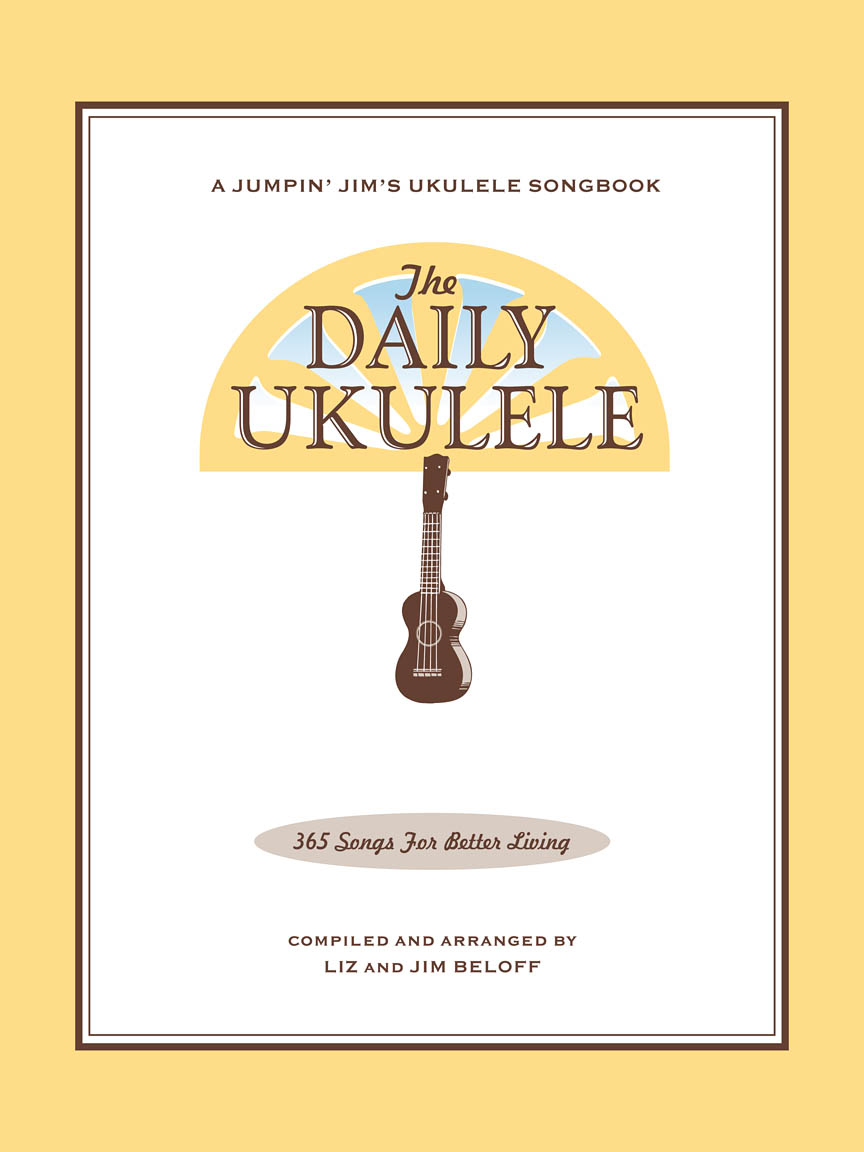
The Daily Ukulele— 365 Songs for Better Living book.









VI7
( V of II)
II7
( V of V)
A Harmonic Analysis (RMA/HA) and its worksheet are intended to show the function of the chords, the harmonic principles used, the keys and tonalities the song explores. And, can be used for scale selections and chord and scale substitutions.
lead leadsheet.Minimal roadmap information such as repeats, fine, D.S., D.C., and codas has been used in preparing the worksheets to somewhat mirror the leadsheet in the Daily Ukulele book.
Yellow Book. You should start to recognize that 1st endings typically always return to a previous verse or an
 section. With a 2nd ending, a transition to a different part of the song, a
section. With a 2nd ending, a transition to a different part of the song, a  or chorus. Harmonic Principles are used for these repeats and transitions.
or chorus. Harmonic Principles are used for these repeats and transitions.- Dream A Little Dream Of Me is in 4/4, Common Time and the Key of D . The Mamas & The Papas's version in in Key of G at 93 bmp.
- Full Diatonic
- Partial Diatonic • Full Diatonic includes Secondary Dominant chords
- Internal Modulation
- Chromatic
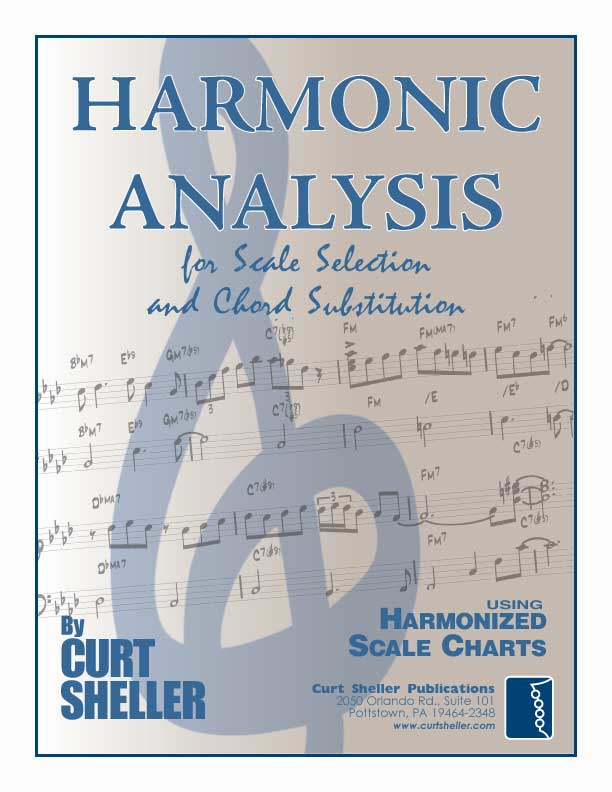
Contemporary Scales: Minor Pent: Minor Pentatonic, Pent: Major Pentatonic, Blues,
Scale/Mode Names: Ion: Ionian (Major), Dor: Dorian (Minor), Phrygian: Phrygian, Lyd: Lydian, Mix: Mixolydian (Dominant), Aeol: Aeolian (Natural Minor), Loc: Locrian
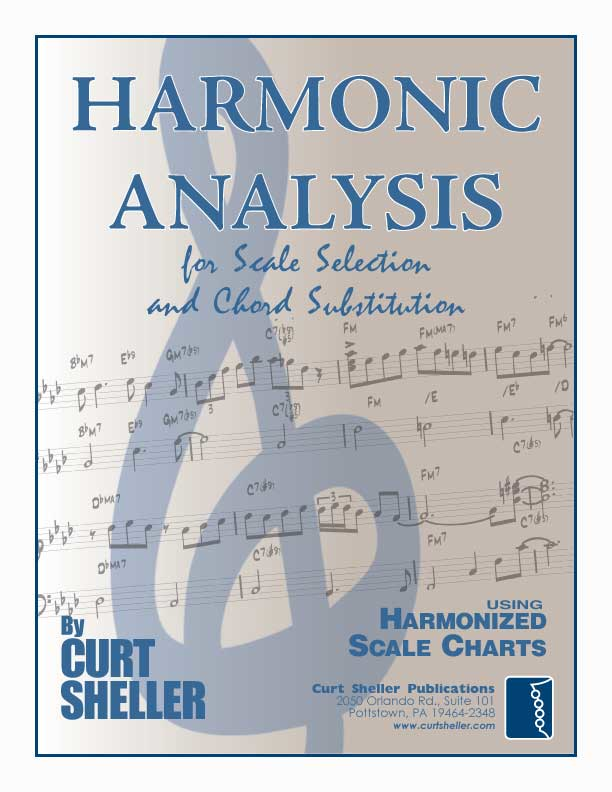
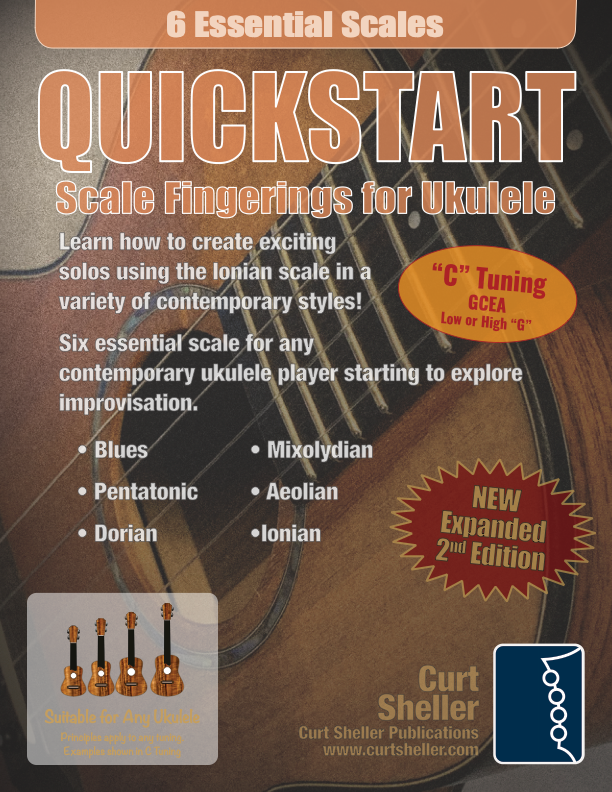
Related Lessons, Videos, Lesson Series, Songs, Books & Reference Charts, Resources & Assets, Workshops are below.
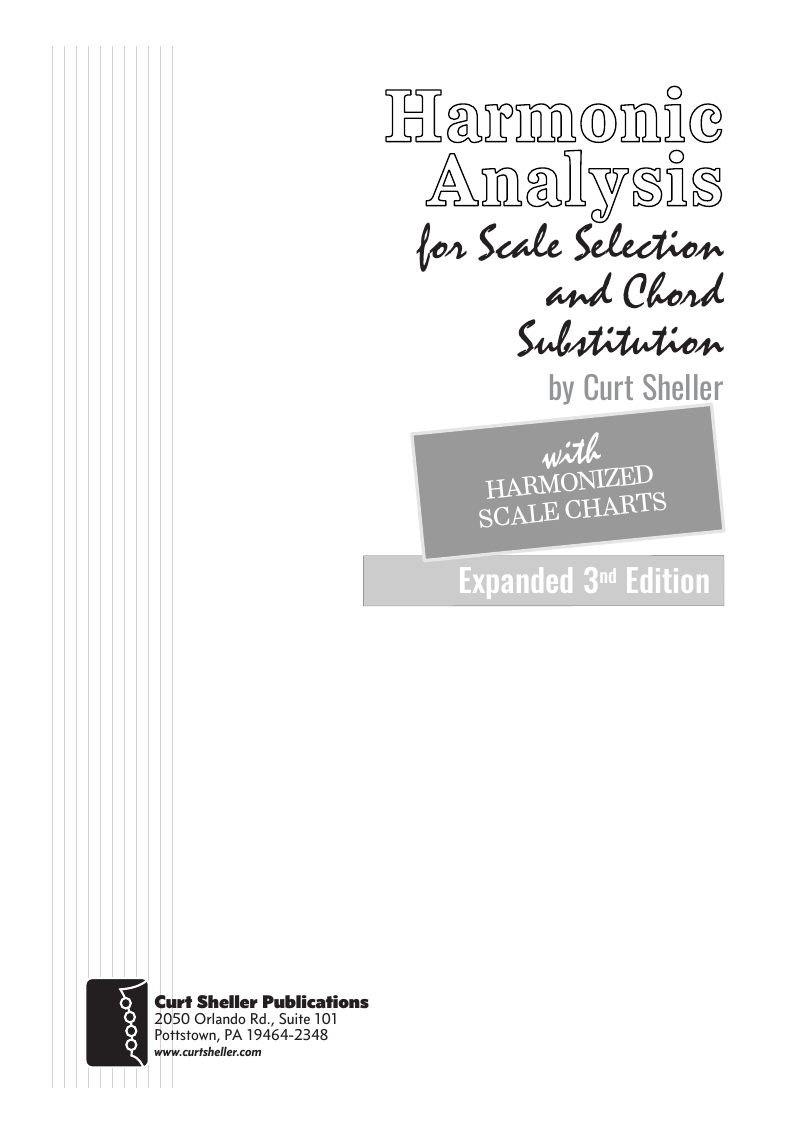
Harmonic Analysis ( HA ) is the process used to determine the harmonic function of chords within a chord progression. A chord progression is defined as a sequence of chords, each chord has a root and has a particular chord type. The relationship of a chord's root to a scale determines its function within that scale's tonality. Once a chord's function is identified, scale selections along with chord and scale substitutions can be made. This process is called Root Movement Analysis ( RMA ). This series of lessons are extracted from my book for use with individual private and on-line students. Each lesson directly corresponds the chapters in my book Harmonic Analysis for Scale Selection and Chord Substitution by Curt Sheller (me).

Harmonic Analysis (HA), also known as the study of chord relationships, is the method used to identify the harmonic role of chords within a chord progression or song. A chord progression refers to a sequence of chords, with each chord having a root note and belonging to a specific chord type. The function of a chord within a particular scale's tonality is determined by its relationship to that scale.

Harmonic Analysis is the understanding of the functional sequence of chords. It is the process used to analyze the harmonic structure of a progression, song or composition. This analysis is then used to make scale selections for improvisation and chord substitution.
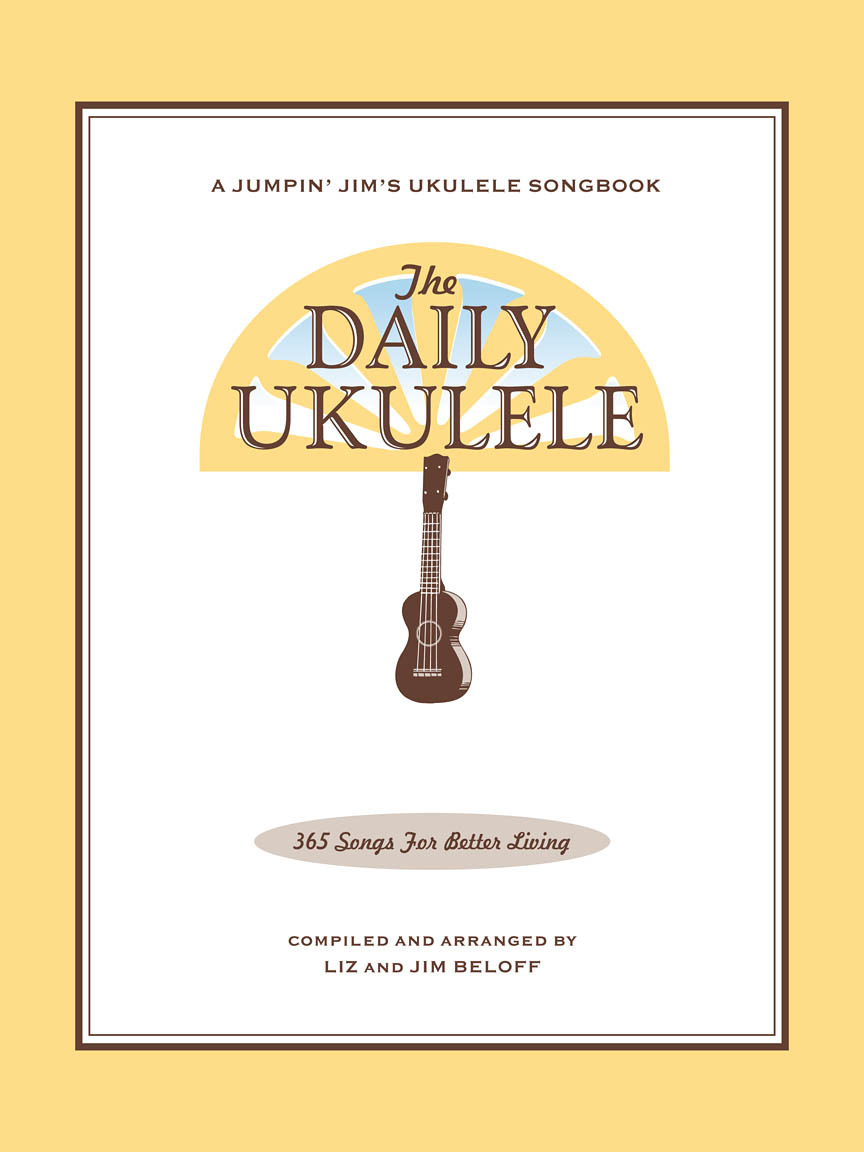
Strum a different song every day with easy arrangements of 365 of your favorite songs in one big songbook! The Daily Ukulele features ukulele arrangements with melody, lyrics and uke chord grids and are in ukulele-friendly keys that are particularly suited for groups of one to one hundred to play and sing.
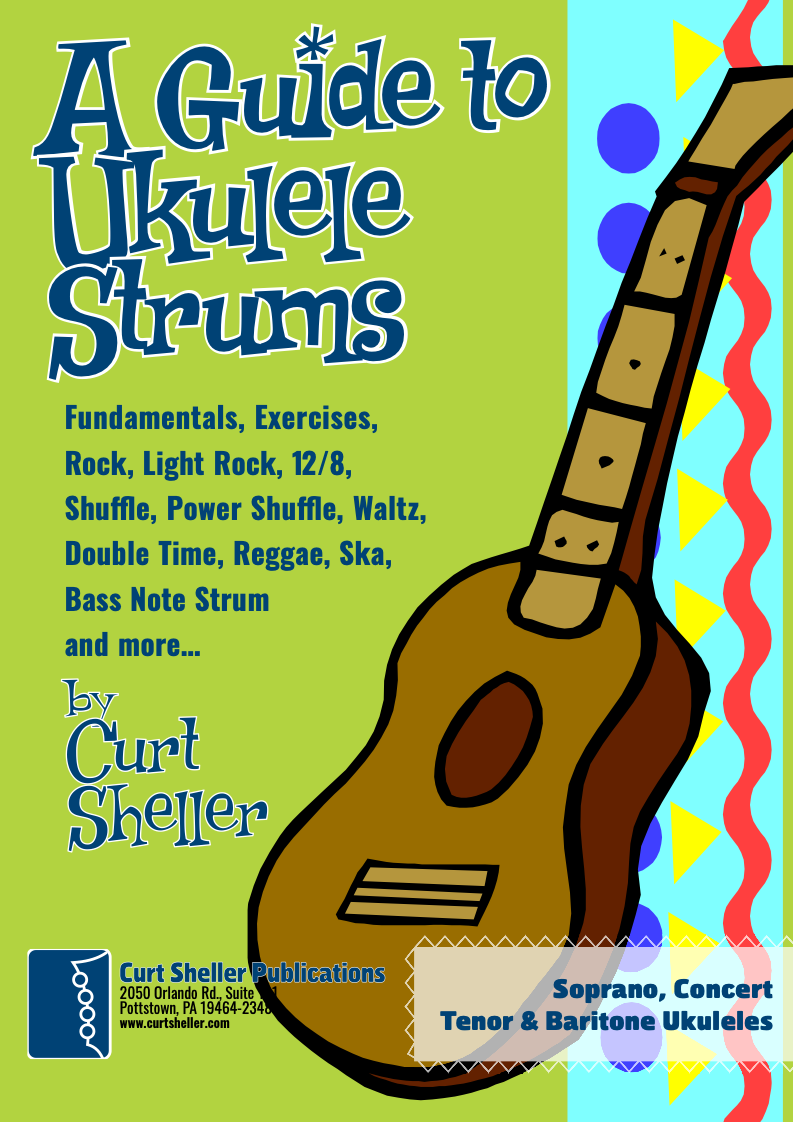
Learn a variety of strums and rhythmic patterns in wide range of musical styles. One of the first skills a ukulele player learns is the art and craft of strumming, playing rhythm. This refers to an accompaniment technique suitable for the singer, singer - songwriter or someone who plays a support role for another instrument.

Finally, learn the names of the notes of the ukulele fingerboard in C tuning .

Learn the six fingering principles to navigating the ukulele fingerboard. Fingering is one of the most universal topics. Book: Six Secrets of the Ukulele Fingering

Harmonic Analysis is the understanding of the functional sequence of chords. It is the process used to analyze the harmonic structure of a progression, song or composition. Book: Harmonic Analysis for Scale Selection and Chord Substitution

Learn to read single note melodies in the first/open position is a lot easier than you might think. Book: Ukulele – Reading Music Series – Primer

An organized collection of daily practice and reference material for the contemporary ukulele player for developing the vocabulary and knowledge necessary for single note playing. Book: Daily Practice Material for the Contemporary Ukulele
Checkout the Books & Reference Charts for additional Handy, Dandy Reference Charts.

Ukulele Fingerboard Chart for C Tuning, Low or High G – G C E A

Ukulele Fingerboard Chart for G Tuning, Low or High A – D G B E

A handy reference chart of all 15 major and relative minor key signatures. US Letter 8.5 x 11 sized (ANSI-A), A4
Checkout the Books & Reference Charts for additional Handy, Dandy Reference Charts.



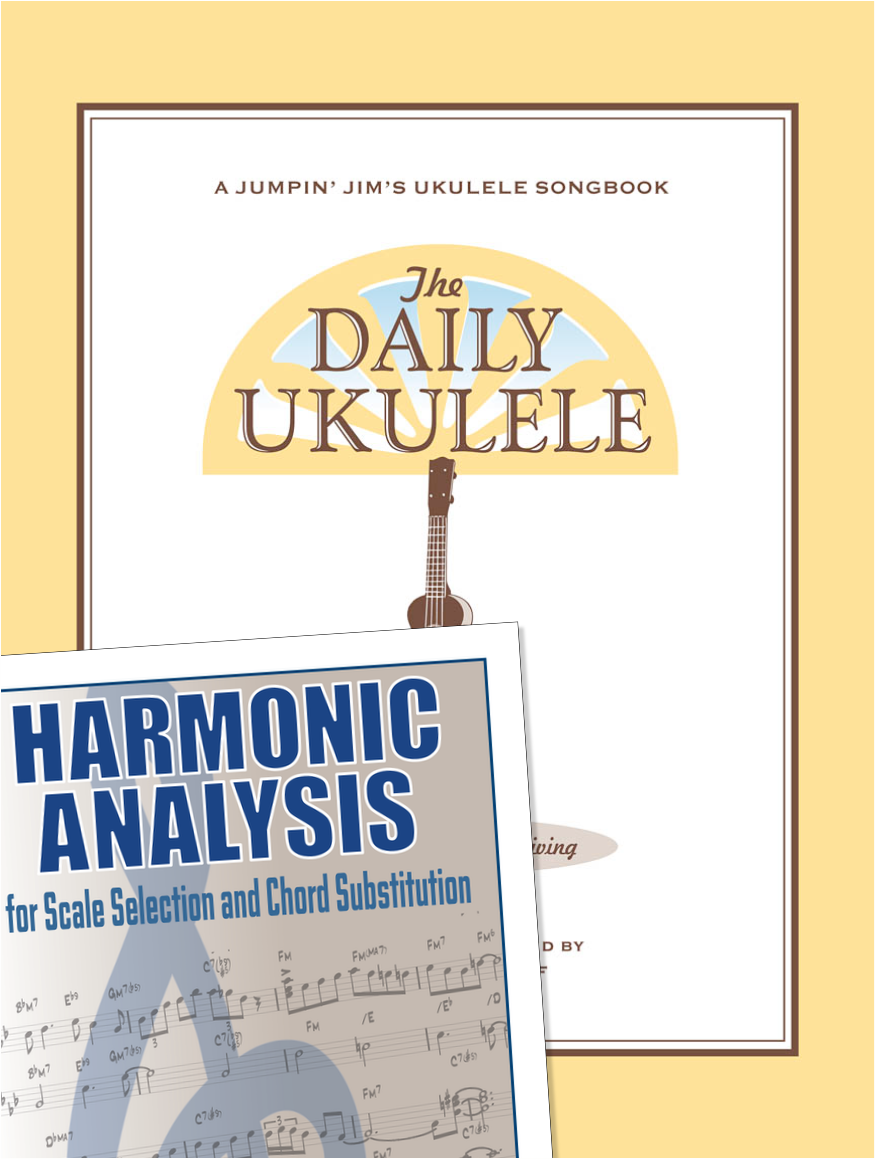



.jpg)